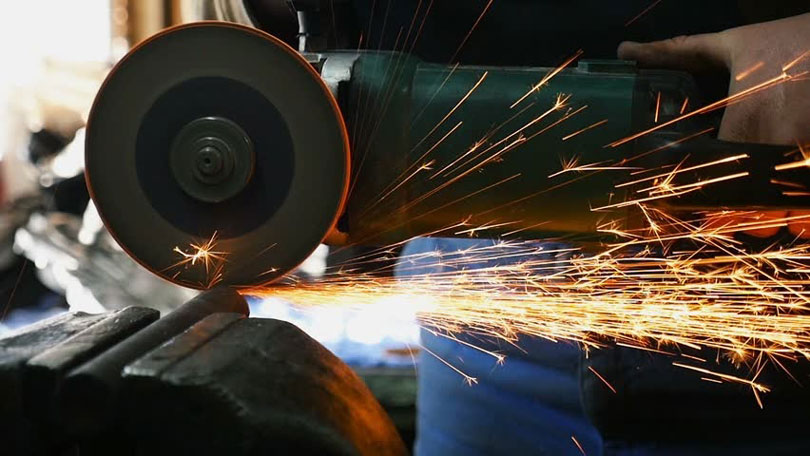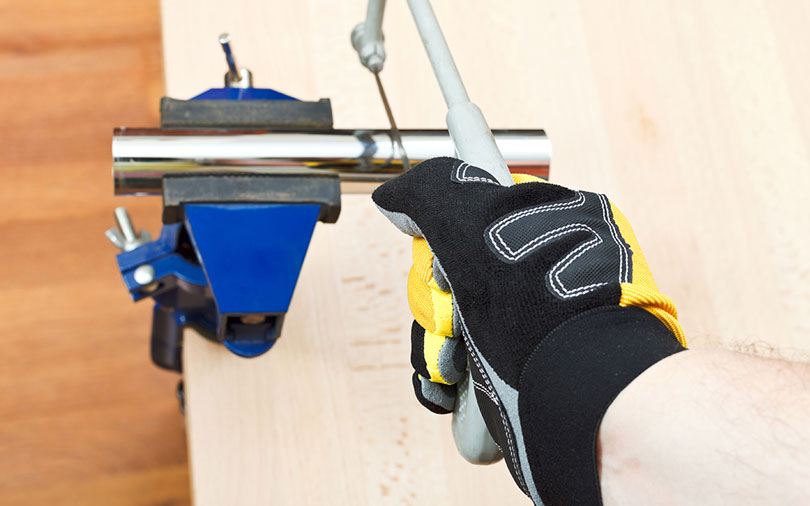How to Cut Metal Pipe: A Beginner's Guide
DIY projects are a fun way to spend an afternoon. But if you want to build your own furniture at home, you need to make sure you know what you are doing. Otherwise, you might get hurt or your final project won’t turn out as you planned.
Cutting metal pipe is a crucial step in a variety of DIY projects. Don’t let this intimidate you. With some basic instructions and the right tools, it’s easy to cut metal pipe at home.
In this post, we’ll cover three different ways you can cut metal pipe for your projects. Plus, we’ll discuss a bonus option that keeps you from needing to cut pipe altogether.
What to Think About Before Cutting Metal Pipe
Before you start cutting your metal pipe, take a step back. There are a few elements you should think about first:
- The Project- Instead of diving in, think about your project first. What exactly are you planning to make? Have you measured (and double-checked) the length you need to cut?
- Tools- Make sure you have the tools you need before cutting your pipe. It’s easy to cut pipe, but if you don’t have the right tools, you can injure yourself or damage the pipe.
- Safety- Safety is key. Make sure you have work gloves, eye-covers, and any other protective materials you need.
- Budget- What is your budget for this project? If you are working with a limited budget, you might want to think twice before you purchase metal-cutting tools. To save some money, you could purchase pre-cut pipe instead. We’ll go into more detail about this later in the post.
- Time- How much time do you have to dedicate to this project? Using pre-cut pipe can also help you save time. You won’t have to spend any time cutting and instead can focus on building your project.
Three Tools for Cutting Metal Pipe
Now that you have thought about your project, let’s look at three different ways you can cut metal pipe.
Tube Cutting Tool

Tube cutting tools make precise cuts, which is especially important for cutting new pipe. Unlike the other tools mentioned below, this tool only works to cut pipe. So, you might not want to invest in this tool unless you plan to make a lot of projects with pipe.
Angle Grinder

A power tool is useful if you are trying to remove old pipe from a tight space. You’ll want to use protective goggles, gloves, and earplugs when working with an angle grinder. Make sure you have the right wheel for cutting metal. Blades with smaller tines are best for this material.
Hacksaw

A hacksaw is not always the best option, but it can be used to cut pipe, especially if you already have one in your toolbox. You will need to secure the pipe before you start cutting. Then, be patient and use gentle pressure to cut the pipe.
How to Cut Metal Pipe: Instructions
Now that you know about metal cutting tools, let’s look at the step-by-step instructions for using each.
Tube Cutting Tool
Step 1: Take Measurements
Before using the cutting tool, take precise measurements. Once you have marked each pipe, you can move on to the next step.
Step 2: Place Pipe in Cutting Tool and Tighten
The cutting tool has two rollers and a cutting wheel. Place the pipe in position and tighten. The three points will move around the pipe and make precise cuts.
Step 3: File
After cutting the pipe, you will need to file the inside edge to remove the burr that was created.
Angle Grinder
Step 1: Gather Safety Materials
Before using a power tool, make sure you have the proper safety gear.
Step 2: Measure and Mark
Make your measurements and mark the cut on your pipe.
Step 3: Cut the Pipe
Be sure that the grinders are running before they touch the pipe. Give the blade time to speed up before touching it to the metal. After you’ve started the grinders, move the blade to the pipe and make the smooth cut.
Hacksaw
Step 1: Secure the Pipe
It is crucial to secure your pipe before cutting it with a hacksaw. Otherwise, the sawing motion could cause the pipe to move during the cutting process. Be sure to support the longer end of the pipe before making your cut.
Step 2: Be Patient as You Cut
Hacksaws take longer to cut through pipe than power tools. Be patient as you saw through the pipe. You don’t need to apply a lot of pressure. Instead, use a gentle, consistent pressure and motion as you saw.
Step 3: File
After making your cut, you will need to file the cut end to make it smooth. You can use a metal file or sandpaper to smooth out the burrs.
Pre-Cut Pipe
As you can see, with the right tools, cutting metal pipe isn’t a difficult task. However, if you don’t have the tools, budget, or time to cut pipe, consider purchasing pre-cut pipe instead. Speak with a member of our team today to discuss your project. We can custom cut pipe to your specific dimensions. Soon, you’ll have the pre-cut pipe you need to finish your DIY project!
Cut Metal Pipe Today!
Now that you know more about the methods for cutting metal pipe, are you ready to incorporate these techniques into your next project? If you aren’t quite sure where to start, we’re here to help! We offer free design assistance to help you get your project started.
Feel free to browse our selection of galvanized pipe for some inspiration. Remember, if you don’t want to cut the pipe on your own, you can also order pipe that is already cut to your specific dimensions.
Once you are finished, feel free to submit pictures of your project on our site. We would love to see the DIY project you create!


